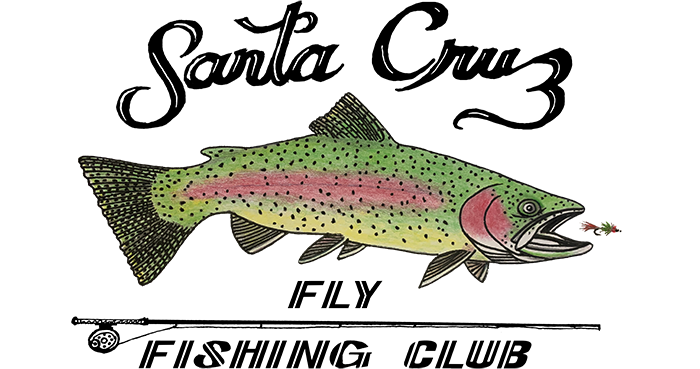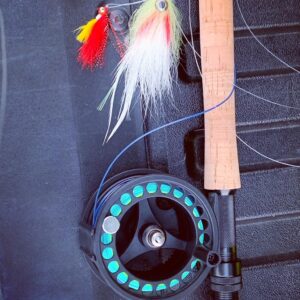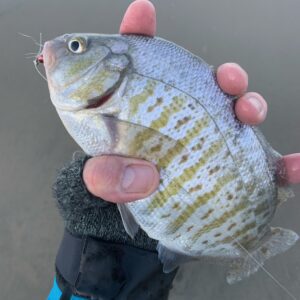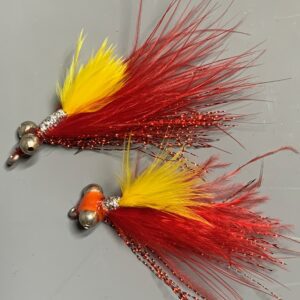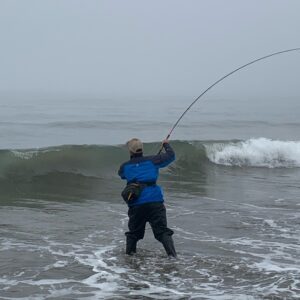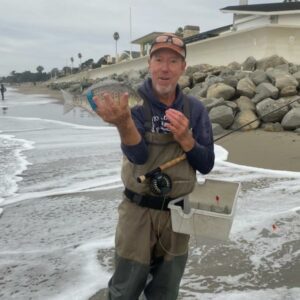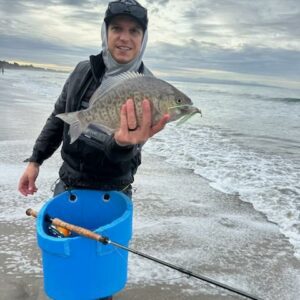The pacific is scarcely visible as we make our way down the steep, sand abraded stairway towards the shoreline. Audibly, you can sense the breakers might be challenging but the desire to be early in the water and the potential of landing a mini-slab urges you toward the dark water. Whether the tide is ebb or flow might matter but is there really a bad time to fish? Yes, there might be a time that would be dangerous, wave height is excessive or when the wind and blowing sand abrades your face. But other than risking life or rod, is there any bad time to get onto the beach and fling a fly?
There are a bunch of us that venture to one beach or another, in small groups, individually or in larger groups as time constraints allow. Either mode brings interesting conversation, good learning and sometimes personal challenges. Me personally, my beach days are typically Wednesday and Sundays but will ditch work for most other mornings if my meetings allow and someone is interested. There have been several mornings when I am taking calls while driving on Soquel San Jose road. BTW there are two good places to get coffee on the little winding highway back to San Jose.
The target species in the winter is typically barred perch. Our group typically fishes between Pajero Dunes and New Brighton, rambling into every slice of sand in-between. I can’t speak for any of the other groupers but I enjoy the familiar beaches as well as I enjoy exploring. The fish are where you find them. The enjoyment is walking the beach and probing rips, troughs or any ripples around bars that might be holding fish. In the winter, the surf seems to be a bit higher and the beaches change as weather pushes the sand. Finding structure increases the odds of catching fish and it seems like once the stripers head into the rivers you do catch bigger perch. Barred surfperch or an infrequent calico might appear. Both are really fun to fight on a seven-weight rod.
I didn’t want to get deep into gear because everyone has a little different spin on the preferred. For me, my perch rod is an 11-foot, 330g, two handed rod which is advertised as being equivalent to a 7/8-wt single handed rod. I don’t have an expensive reel, just a line holder made by Compo69 which is almost all plastic but impervious to salt. This summer I landed a bat ray with at least an 18-inch wingspan. Only time I wish I had a friction drag because my palm was burning from the ray’s heft. Good thing there was a bunch of sand to run up and down. My line which might be the most important gear component is a full sinking RIO cut to length T-14 which is a tungsten line that is integrated into an intermediate running line. I like the integrated line because the loops don’t bump going through my guides. I cut the line to match the grain of the rod. Again, this is how I do it but everyone has their own methods.
When blind casting into deeper structure two things are important; getting to depth and staying in touch with your flies. I learned the essentials from the club veterans and the clubs perch outings which are outstanding events. Winter perch might also like larger flies. Only a theory because my personal best this year was caught on a size 8 perch pattern the club teaches during one of the fly-tying classes. I however like Imagineering fly patterns and trying new materials, bigger and smaller. One of my flies, two fished consistently, is typically something unique and a tried and true fish slayer.
If you have not ventured out this winter you are missing a fabulous opportunity. The beach resource during the summer gets pounded by bait dunkers and jig masters however the winter you see fewer anglers. If you are minimally adventurous and are not disagreeable to a nippier air, get out there and fish. Perch are waiting to be tantalized by your undulating marabou and glittery profiles.
Posted on January 25th, 2024
